Search this site ...
African Slavery and Contemporary African Art
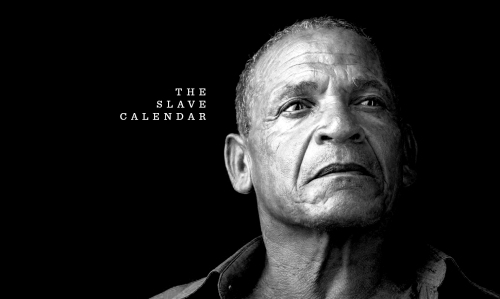 Slave Calender
Slave CalenderAfrican slavery is a highly emotive subject which continues to affect and impact millions of people the world over.
There are many contemporary African artists who have chosen to use those emotions to make a visual comment about some concept of this monumental subject. The outcomes are generally powerful and potent and manage to stir both our conscious and unconscious thoughts and feelings. Some works are brutal in their honesty, some have taken a spiritual aspect, some demand an intellectual response, some are carved from a deep, inherited consciousness and some are just the outcome of a sense of outrage.
In recent history, a number of museums have held exhibitions which have highlighted African slavery or commemorated the abolition of slavery. Using combinations of work from contemporary artists and in some cases, historical text and images, they have managed to contribute to public awareness and sensibility around the topic.
- 2007 - V&A Museum, London, Liverpool ‘UNCOMFORTABLE TRUTHS: THE SHADOW OF SLAVE TRADING ON CONTEMPORARY ART AND DESIGN’
This exhibition sought to commemorate the bicentenary of the Parliamentary Abolition of the Trans-Atlantic Slave Trade with both new and commissioned work from a number of contemporary African artists.
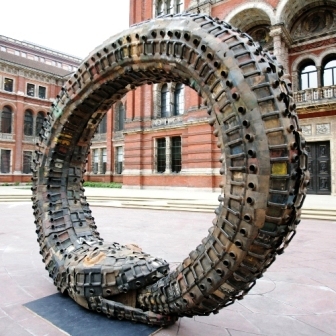 Romauld Hazoume 'Arc en Ciel' symbol of perpetuity
Romauld Hazoume 'Arc en Ciel' symbol of perpetuity- 2006-2007, New York Historical Society, 'LEGACIES: CONTEMPORARY ARTISTS REFLECT ON SLAVERY'
Legacies brought together the work of some 2 dozen artists, including the like of Kerry James Marshall, Faith Ringgold, Carrie Mae Weems and Fred Wilson. 6 site specific pieces were especially created for the exhibition and all manner of form and medium were displayed; sculpture, painting, video, oral histories, fibre art, photography and public installations.
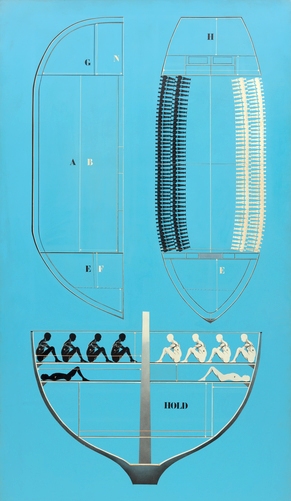 Malcolm Bailey 'Hold, Separate but Equal' created in 1969
Malcolm Bailey 'Hold, Separate but Equal' created in 1969These works captured the tensions that exist between past atrocities and emotions of the present; challenging pieces that are capable of generating historic reflection and public debate.
- 2010, Tate Liverpool 'AFRO MODERN: JOURNEYS THROUGH THE BLACK ATLANTIC'
Afro-Modern Journeys was an exhibition which attempted to trace, in depth, the impact of black Atlantic culture on Modernism. Divided into 7 chronological chapters it covered a wide spectrum of events, movements and debates that have undeniably impacted on contemporary culture.
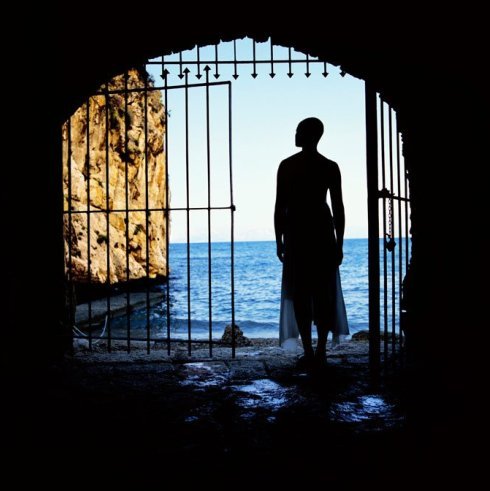 Julien Isaac, slave gate
Julien Isaac, slave gate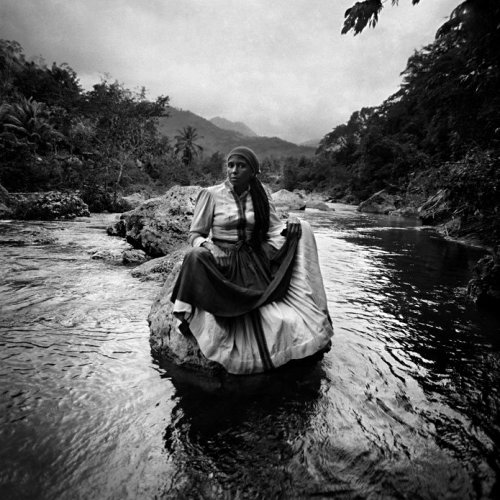 Rennee Cox 'African Queen'
Rennee Cox 'African Queen'Above are 2 artists who were featured in the 'Reconstructing the Middle Passage' Section which examined how contemporary artists have revisited this historical trauma by embarking on 'a process of imaginative recovery'.
- 2015, UNESCO’s Slave Route project, Paris - 'ARTISTS AND THE MEMORY OF SLAVERY: RESISTANCE, CREATIVE LIBERTY AND LEGACIES'
15 contemporary artists from Benin, Cuba and the Dominican Republic contributed to this exhibition at the head office of UNESCO which examined the relationship between contemporary creation and the history and memory of slavery.
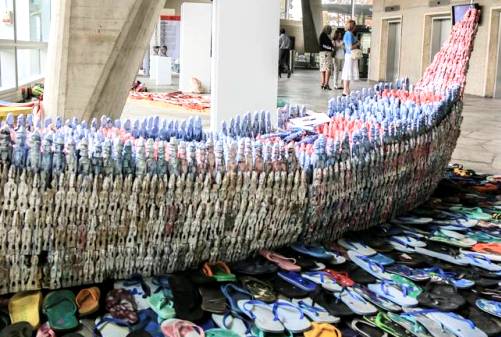 Dominique Zinkpe, installation UNESCO slave route project
Dominique Zinkpe, installation UNESCO slave route project- 2017-2018 International Museum of Slavery, Merseyside, Liverpool - INK AND BLOOD, Stories of Abolition
Below are 3 exhibits of items acquired by the Museum for their permanent collection. Ankle bracelets are currently displayed in the Legacy Gallery, one of which came from a young Niger woman who was subjected to a form of descent-based, societal slavery.
The contemporary piece titled 'Drake-U-Liar' is by UK artist Kimathi Donkor from the exhibition Ink and Blood: Stories of abolition which explored the personal stories of previously enslaved people and the lasting legacies of abolition.
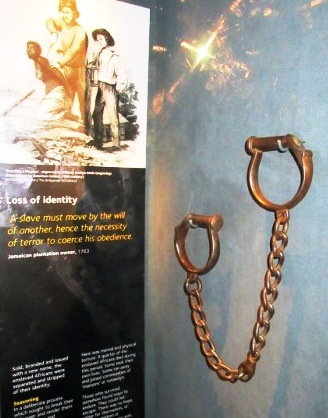
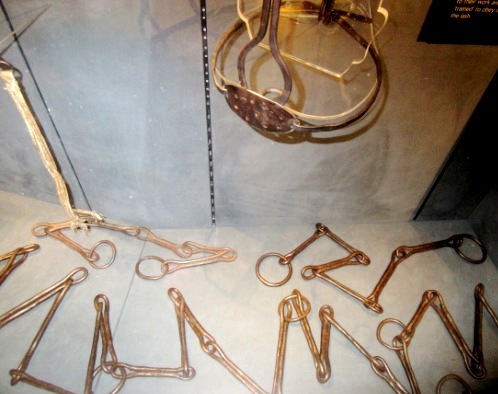 leg irons and head brace
leg irons and head brace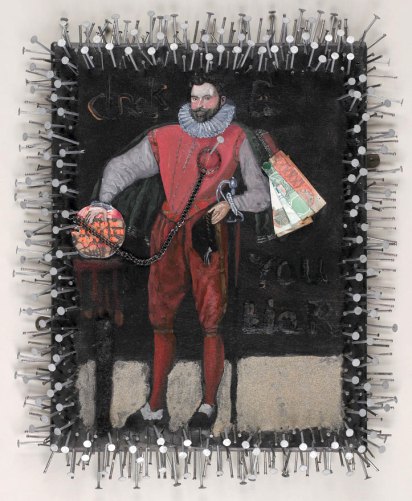 Kimathi Donkor 'Drake-u-liar'
Kimathi Donkor 'Drake-u-liar'- Iziko Slave Museum of South Africa, Cape Town
The Slave Calendar is an initiative created to shed some light on the people in SA impacted by the country's colonial slave trade. It captures in black and white portraiture the living descendants of that trade who have names reflecting the month they arrived in Cape Town.
- National Memorial for Peace and Justice in Montgomery, Alabama
This powerful memorial is meant to perturb, not console — and to encourage truth-telling far and wide. Enslaved African men and women feature in a group sculpture by the Ghanaian artist Kwame Akoto-Bamfo. The work is dedicated to the memory of the victims of the trans-Atlantic slave trade, terror lynchings and racial inequality in general.
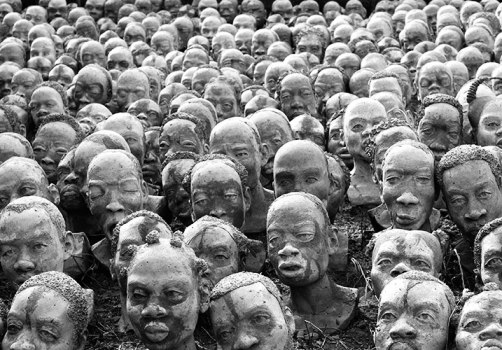 Kwama Akoto-Bamfo, Nkyinkyim installation
Kwama Akoto-Bamfo, Nkyinkyim installationAkoto-Bamfo's Nkyinkyim Installation consists of 1300 pieces of contemporized Nsiso heads individually cast in concrete. This and the ongoing Ancestor Project metaphorically represent the multitude of West Africans captured and taken to the Americas and the Caribbean from Cape Coast and Elmina in Ghana.
ARTISTS
Listed below are some of those contemporary artists who use all manner of different mediums and form to portray and evoke some part of this very inglorious past.
- El Anatsui, Ghana
- Nicola Lo Calzo, Italy
- Godfried Donkor, Ghana
- Kimathi Donkor, UK
- Aaron Douglas, USA
- Romauld Hazoume, Benin
- Lubaina Hamid, UK
- Steven Hayes, USA
- Ayana V Jackson, USA
- Jacob Lawrence, USA
- Glenn Ligon, USA
- Kwame Akoto-Bamfo, Ghana
- Mohau Modisakeng, South Africa
- Fabrice Monteiro, Benin
- Chris Ofili, UK
- Julien Sinzogan, Benin
- Kara Walker, USA
- Carrie Mae Weems, USA
- Sue Williamson, South Africa
Photography and Video
Mohau Modisakeng b 1986, Soweto, South Africa
Modisakeng is a young artist who lives and works between Johannesburg and Cape Town. He attained a masters degree at Michaelis School of Art, UCT in 2009. In 2017 he was chosen to represent South Africa at their Pavilion at the 57th Venice Biennale.
His work is represented through film, large-scale photographic prints, installations and performances and he mostly uses himself as a model with props and costumes to reflect his won experiences.
'Passage' is a 3-channel video meditation with an accompanying musical score by Neo Muyanga on slavery's dismemberment of African identity. Each video portrays an individual, each travelling with a single possession whose boat is sinking while they offer no resistance... a poetic confrontation of the expendability of life; cargo or transient bodies of trade who belong to no particular state.
Nicola Lo Calzo b 1979, Torino, Italy
This contemporary photographer believes that Marronage is still poorly understood despite playing a fundamental role in the anti-slavery struggle. Lo Calzo has been working on his project 'Cham' for over 5 years, a series about the legacy and memories of colonial slavery and antislavery struggles.
The portrait below is of Adrien Ajintoena, survivior of the 1986 Moiwana massacre in Suriname - part of a series of photos called "Living and breathing".
Communities of runaway slaves known as Marroons were found throughout the Americas.
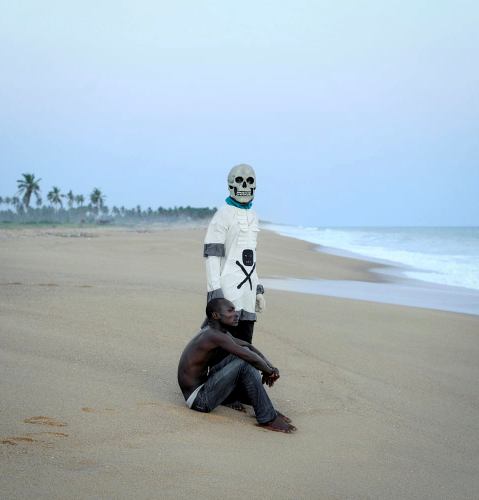 De Souza cousins after Buryan ceremony, Ouidah
De Souza cousins after Buryan ceremony, OuidahThe Tchamba religion of Benin is a unique practice that embodies the ambiguities of the memory of slavery and its meanings within society. Tchamba is the name of the spirit of the slaves in both the local and western trade of slaves. The photographic image above shows two celebrators relaxing after partaking in a religious Vodun festival.
Fabrice Monteiro b 1972 Namur, lives and works in Dakar
Belgian-Beninese Monteiro is a recently-emerged artist/photographer.
His exhibition titled Marrons, Les Esclaves Fugitifs was described in one critical review as a 'beautiful nightmare on shackles & slavery'. The devices depicted are based on historical documentation of these brutal and savage methods used to subdue, punish and prevent escape. Monteiro redrew the plans of 5 different types of shackle, studying archival photos and lithographs before producing his own iron implements for the exhibition of photographs in 2016.
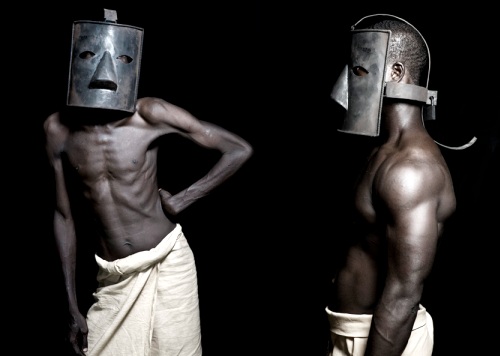
Contemporary content in the style of lighting, posture, composition and mood presents this dark reality in a modern but deeply unsettling manner... we feel both the menace and the intended degradation of the subjugation in these powerful images.
Painting
Julien Sinzogan b 1957, Porto-Novo. Lives in France
Using mixed media and pen and ink, this artist from Benin portrays an alternative, more uplifting view of the Middle Passage. Through the experiences of slaves on the Atlantic crossing he echoes the spiritual beliefs of his Yoruba people who see life as a cyclical path: Individuals experience the tangible world, cross over to the spirit world and are reborn.
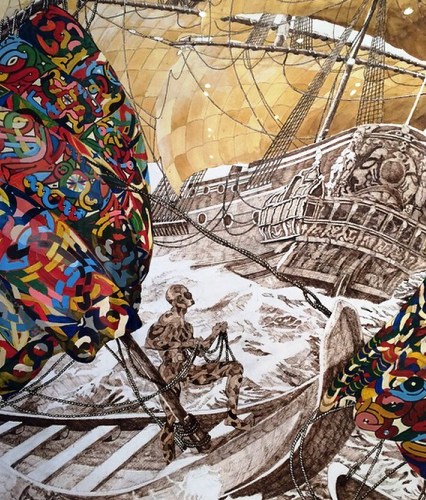 Julien Sinzogan, Bon vent a tous
Julien Sinzogan, Bon vent a tousDespite the joyful colours and exuberant, voluminous sails, one never fails to ingest the underlying solemnity of the subject matter.
Kimathi Donkor b 1965, UK lives and works in London
Donkor grew up in rural England, moving to London and attending Goldsmiths University in the 1980's. With family connections from Africa and the Caribbean he has pursued a painting career highlighting historical narratives about slavery, emancipation and the African diaspora. He remains dedicated to restoring the history of the transatlantic trade as fundamental to European art history.
This painting is about resistance; Toussaint L'ouverture leading the slave rebellion to gain Haiti's independence. Kimathi endeavors with his paintings to connect and engage on a deeply psychological and even spiritual level. For more insight into the artist read here
Godfried Donkor b 1964, Ghana, lives and works in London
Traditional collage is his main medium of work and his dominant form of expression but he also uses photography, printmaking, painting and drawing in his creative processes. In the series below he uses sport (especially boxers and wrestlers) and sexuality as contemporary foils set against slave ships and their commodity ledgers.
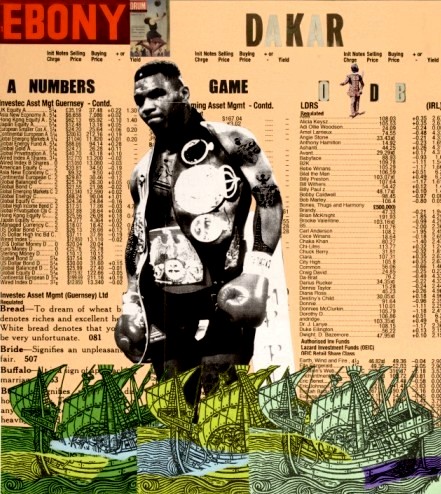 'Ebony, Dakar'
'Ebony, Dakar'He frequently uses sport and sexuality (especially boxers and wrestlers) as iconic heroes in his work, setting them up as contemporary foils against backgrounds of slave ships and newsprint (commodity ledgers or FT stock lists). These images include Tom Molineaux and Bill Richmond - freed American slaves who achieved acclaim in the 19th C.
Kerry James Marshall b 1955, Alabama, USA
Born in Birmingham, Alabama and growing up in Watts, Los Angeles, this highly acclaimed artist has settled for Chicago to live and work from. He is known for his large-scale canvases that capture working class African-American life... most specifically their leisure pursuits. His figures are as near to pitch black as you can get, seeming like cut-out silhouettes against the riot of colour he otherwise uses in his paintings. He has exhibited widely in the States and overseas.
Below is a painting titled 'American Dream' from the "In the Tower" Series, Marshall's first solo exhibition in Washington at the National Gallery. 30 pieces of work evoked the journey of African Americans from being human cargo on the slave ships, through poverty to relative affluence.
This artist is travelling on his own extraordinary journey; one of his paintings recently sold for just over $21 million US$. He knows just what he wants to achieve with his work, positioning African Americans within the framework of their own history and confronting present society and culture.
Aaron Douglas b 1899, Kansas, USA
An artist and illustrator he developed his art career by painting murals that addressed social issues around race and segregation. Known as a prominent leader in modern African-American art he painted several paintings round the topic of slavery and liberation. In NY he studied art with the German modernist Winold Reiss who encouraged him to celebrate his race pride by incorporating African motifs and themes into his work.
'Into Bondage' is a powerful depiction of enslaved Africans bound for the Americas.
A long trail of shackled individuals make their way to the ships in the horizon. Arms thrown in the air make for a single gesture of despair. Concentric circles and a beam of light soften the gloom and give reason for hope... perhaps a representation of sound and song?... fundamental attributes of African culture and expression.
Installation & Sculpture
Sue Willamson b 1941, Cape Town, SA
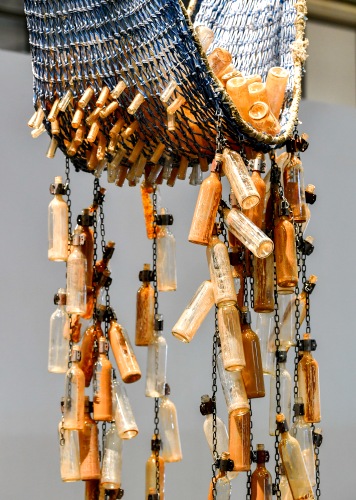 'Atlantic passage' close-up
'Atlantic passage' close-up'Messages from the Atlantic passage'- first shown at Art Basel 2017.
Each of the 3 tanks represents a slave ship on one of the estimated 36 000 voyages made across the Atlantic. The wooden frame surrounding the tank gives the name of the ship, its route and how many people embarked an disembarked.
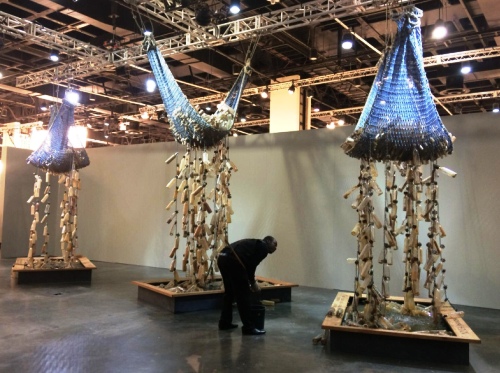 Sue Williamson, Messages from the Atlantic Passage, Jhbg Art Fair 2018
Sue Williamson, Messages from the Atlantic Passage, Jhbg Art Fair 2018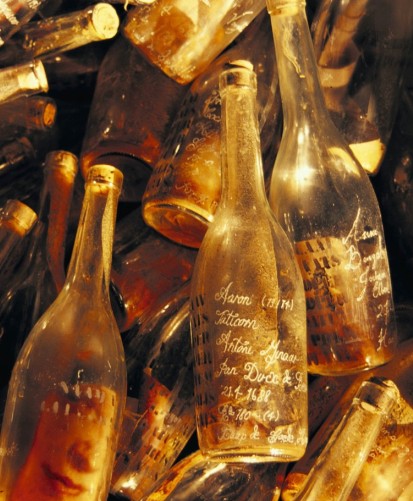 Slavery message
Slavery messageThe traces of earth in the bottles represents the continent that has been left behind. Each bottle is engraved with information about one of the enslaved on the voyage; their African name, their Christian name, their country of origin, the plantation, an owner, a price. Included is also the age, height and sex of the person; all scanty facts that offer insubstantial memorialisation.
The fragility of the glass bottles invokes the manner in which humans are treated as commodities to be traded.
Stephen Hayes b 1983, Durham, North Carolina, USA
Attaining an MFA in sculpture at Savannah College of Art and design, this installation entitled 'Cash Crop' was part of Hayes's final thesis in 2010. The collection has grown and been added to over some years. It continues to travel and has been exhibited in a number of institutions, gallery spaces and museums. It seeks to draw parallels between the economics of the slave trade and the third world sweatshops of today.
The most crucial segment of the exhibition is that that gives the show its title... a piece composed of 15 life-sized casts of the artists's friends and family representing the 15 million odd African people thrown into slavery. They are presented standing up in their boat-like caskets made from wooden shipping pallets.
As a visitor, one is encouraged to walk among the statues feeling the burden of their shackles and the bondage of their trappings while stepping over the iron chains that inhabit the spaces between.... one cannot help but feel an emotive response to this powerful, intimidating and technically brilliant installation.
Standing like a chapel door is a wooden carving - the artist's interpretation of the print of a slave ship that initially set Hayes off on this project.
Kara Walker b 1969, USA, lives and works in NY city.
I make art for anyone who forgot what it feels like to put up a fight.
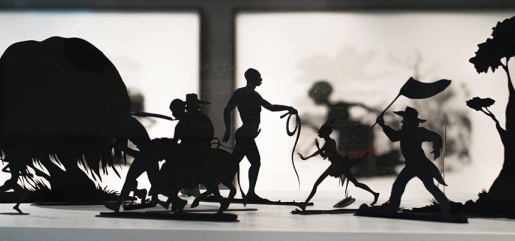 Kara Walker, 'Emancipating the Past: Tales of Slavery and Power'
Kara Walker, 'Emancipating the Past: Tales of Slavery and Power'Kara Walker's practice confronts social and political themes like race, slavery, sexuality, identity and power through methods that include painting, illustration, film and text and more recently, shadow puppetry. Large-scale tableaux of collaged silhouettes are set among pastoral scenes; a contrast to the brutal and harrowing imagery that illustrate the origins of slavery.
In 8 Possible Beginnings or The Creation of African-America she brings together a mass of difficult subject matter like The Middle Passage, illicit births, the cotton trade and lynchings.
The large-scale, public sculpture below was created by Walker as a 2019 Hyundai commission for the Tate Gallery, London.
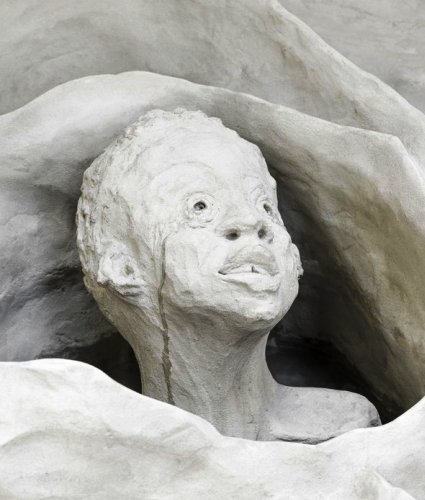 'Fons Americanus' shell grotto (detail)
'Fons Americanus' shell grotto (detail)Titled 'Fons Americanus' it questions how history is remembered in public monuments around the world. It also stands as a narrative on the origins of the African diaspora.
Telling an allegorical tale and using water as a key theme, it brings together fact, fantasy and fiction in this physically overwhelming sculpture which refers to the ambitions, fates and tragedies of people from 3 continents.
Lubaina Himid b 1954, Zanzibar, UK national
Himid has been creating politically driven art for 4 decades bringing forgotten stories to life in a vivid and uplifting manner. Despite the colorful, outer skins of her pieces they carry a message, a story that begs to be told. She says "people survive, understand, carry their history. They are stronger than history, that's the point.'
The installation 'Naming the Money' has been gifted by this Turner prizewinning artist to the International Slavery Museum. It reveals the hidden history of black slaves and servants and gives individuals an identity and a voice.
Created in 2004, it is made up of 100 unique silhouettes. Hewn in wood and painted, the figures represent life-sized servants and black slaves of both genders.
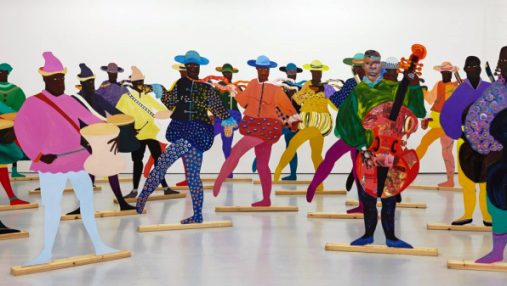 Lubaina Himid, naming the Money at'Spike Island'
Lubaina Himid, naming the Money at'Spike Island'"My name is Nnamdi
They call me Dan
I used to have six drums
Now I borrow these
And it takes some skill"
To understand more about the concepts behind Naming the Money, read these letters written to Lucy Whetstone , curator Hatton Gallery.
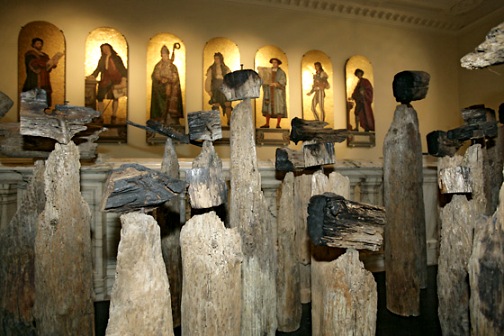
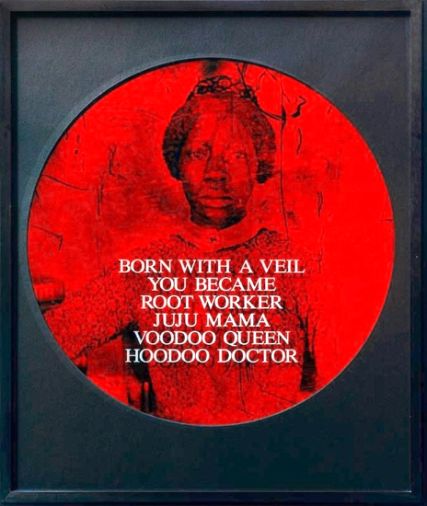
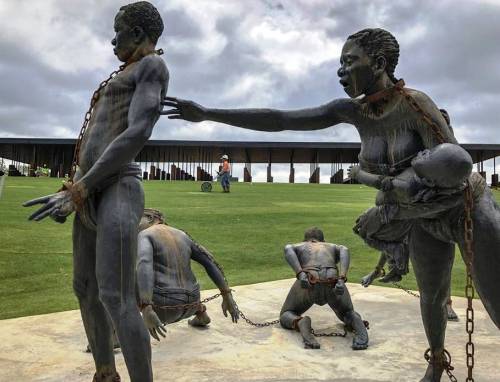
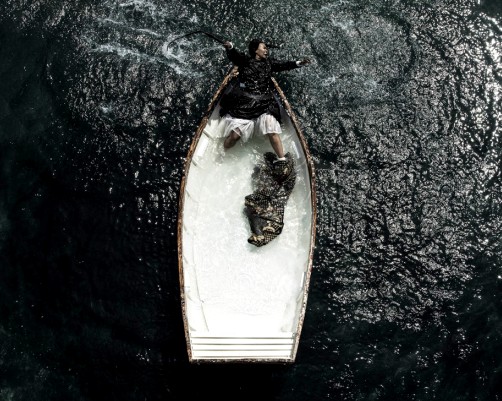
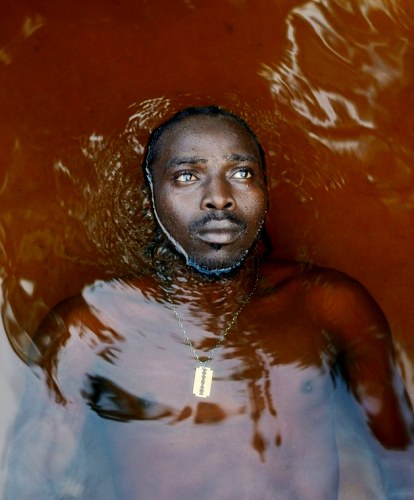
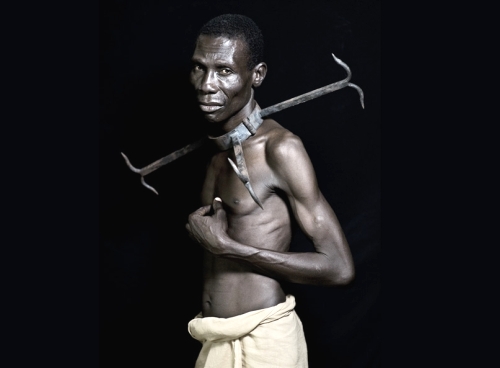
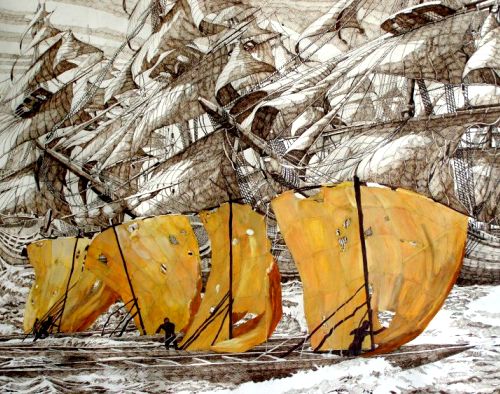
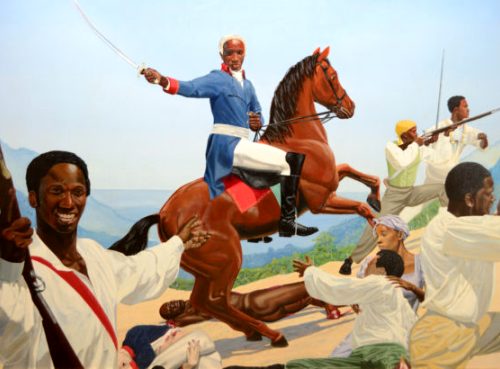
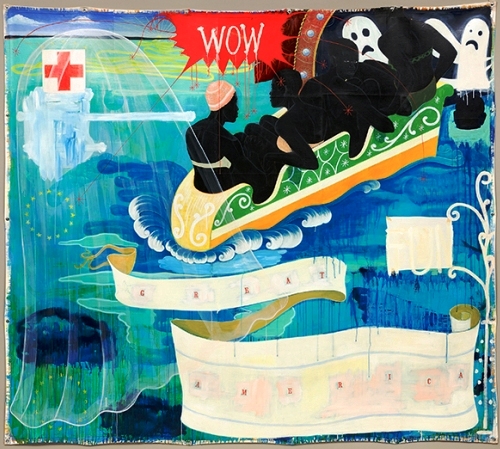
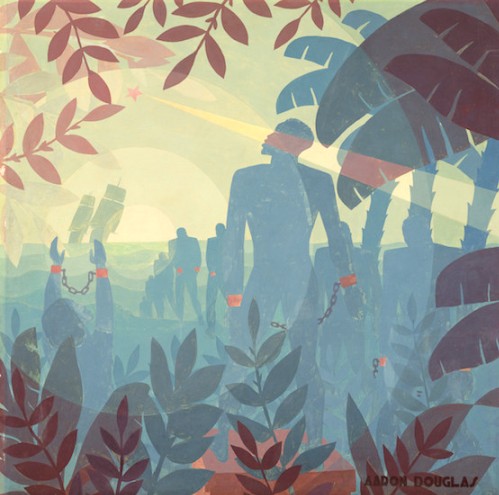
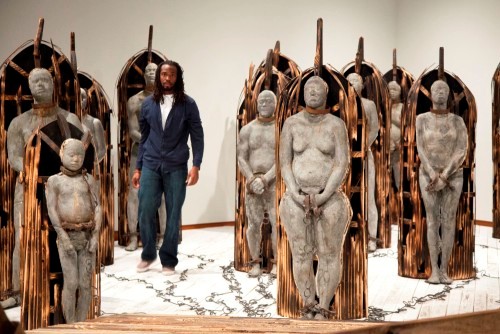
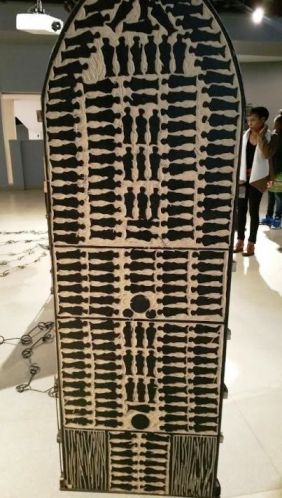
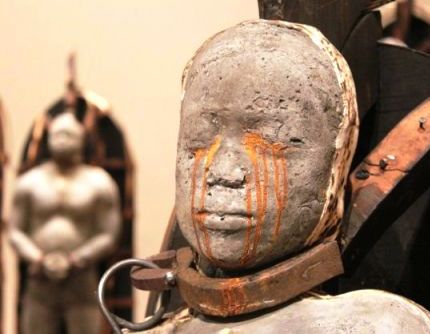
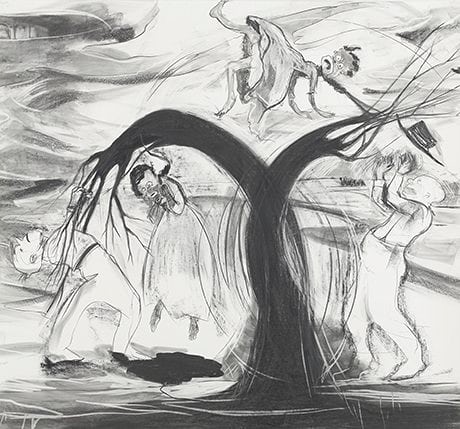
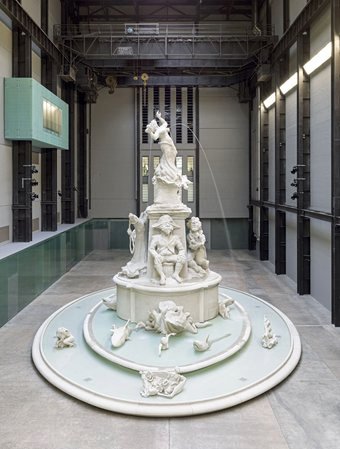
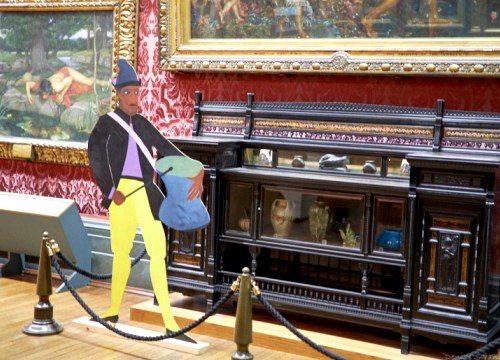
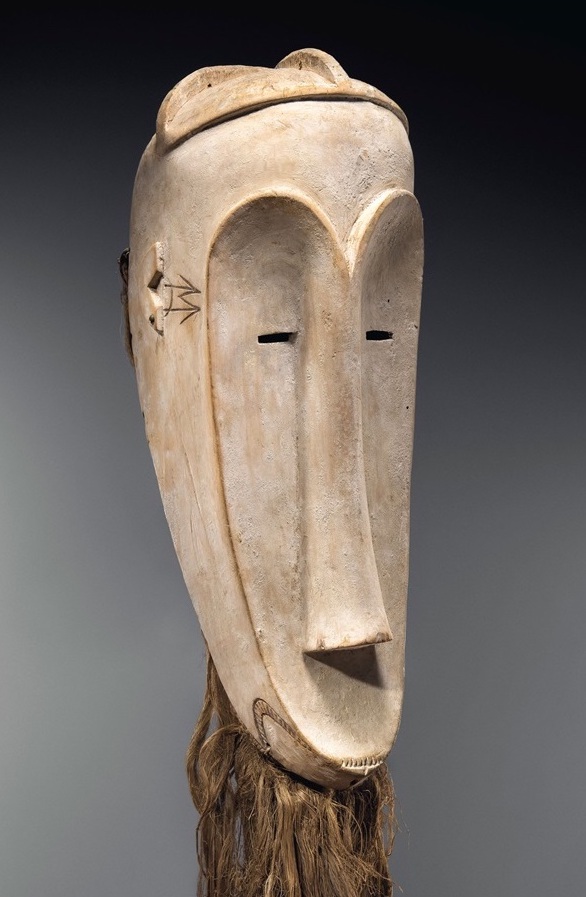
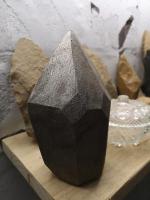

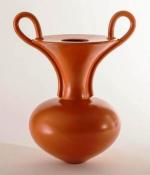
New! Comments
Have your say about what you just read! Leave me a comment in the box below.